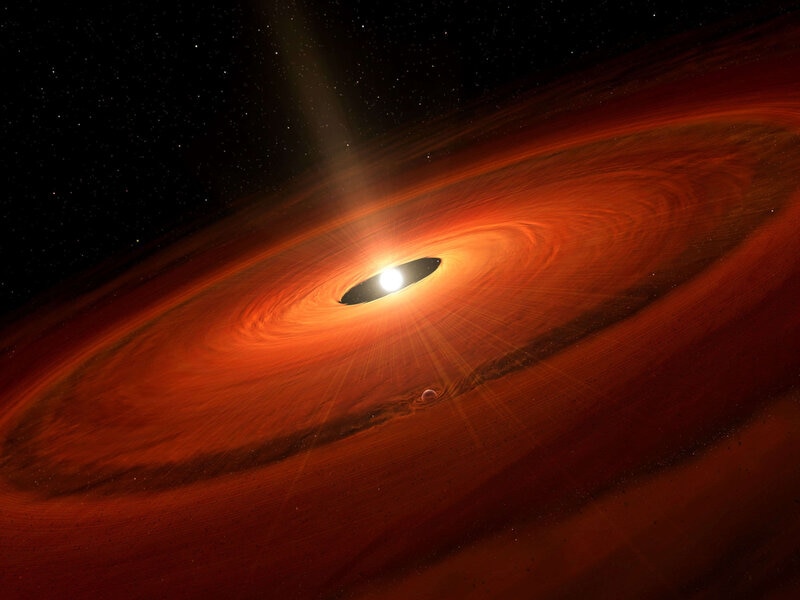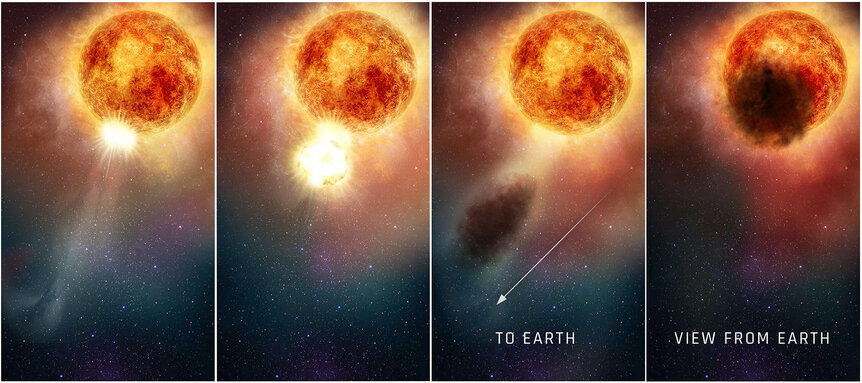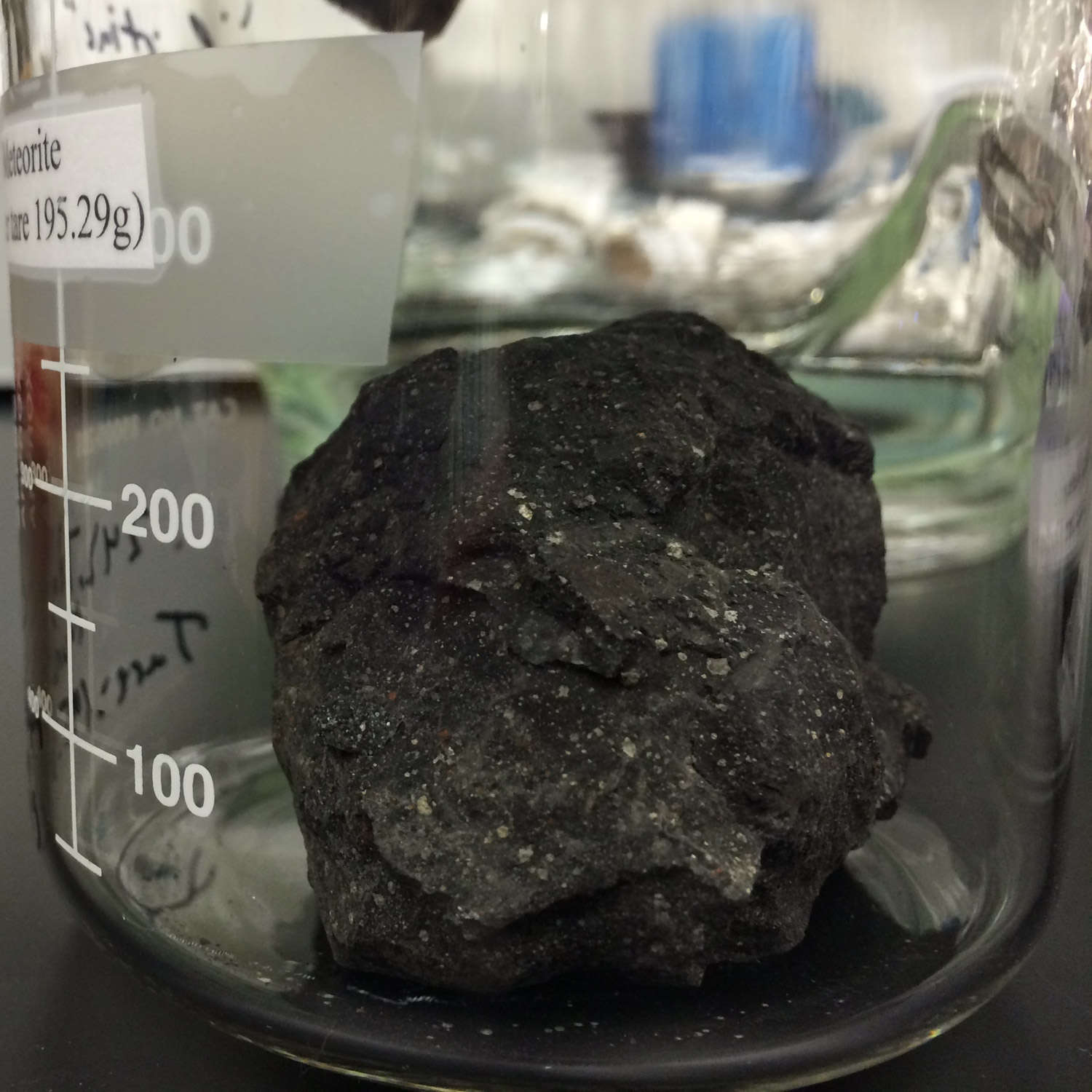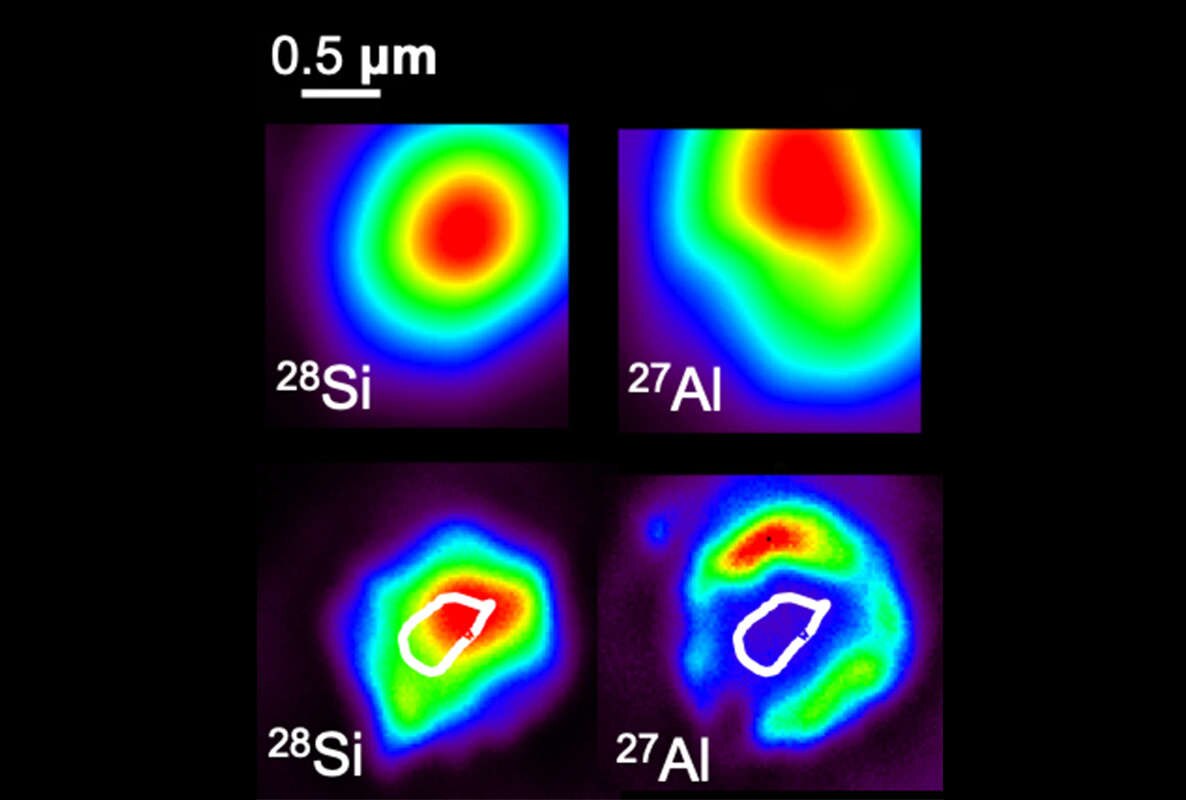Create a free profile to get unlimited access to exclusive videos, sweepstakes, and more!
Tiny grains of alien material in meteorites point to origins in other stars
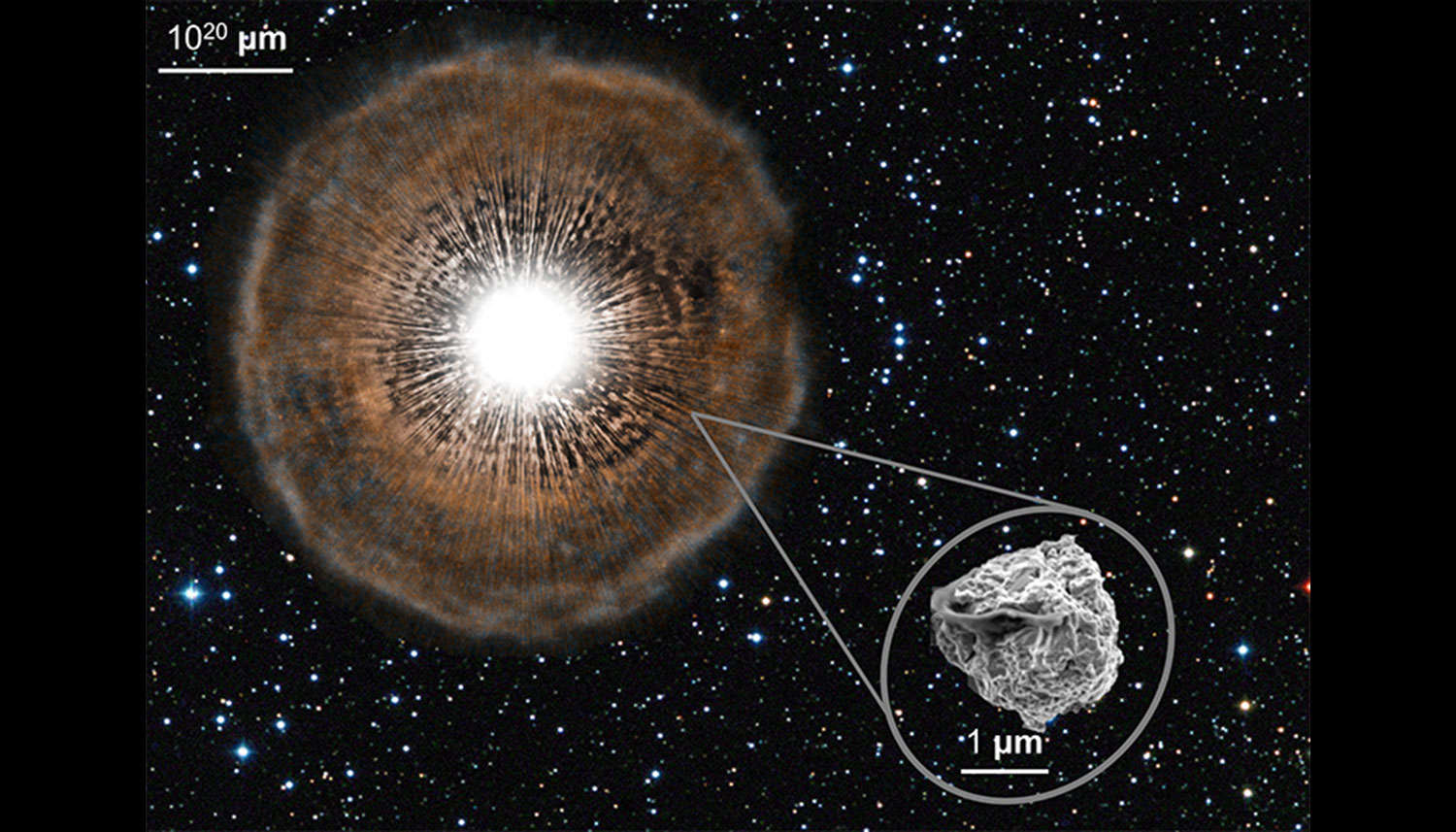
You are made of star stuff.
Carl Sagan said this in his series Cosmos, and it’s literally true. We know the early Universe only had hydrogen and helium (and a soupçon of lithium) in it, and all the heavier elements — carbon, oxygen, phosphorus, and more — were made in stars. These were then ejected into space, eventually making their way into you (some steps may have been skipped here for brevity).
We’ve known for a while that these elements were created in many different stars. The Sun formed from a cloud of gas and dust, and this certainly was contaminated over billions of years by the winds of dying stars and the debris from exploded ones. But what kinds?
A paper just published is helping narrow the choices down. Using a new technique to measure elemental abundances (how many of each kind of element exists in a sample), a team of cosmochemists have been able to track what kinds of stars made some of the material making up the solar system.
How? By looking at meteorites. Surprise!
OK, let’s back up a bit. Some 4.6 billion years ago, a cloud of gas and dust collapsed. It may have collided with another cloud, or a nearby star might have exploded and slammed it with debris, or a dying star with a super-solar wind may have hit it and started the process.
The cloud shrank, and eventually formed a flat disk. The Sun formed in the center, and the planets in the disk. But not at first: This planet-making process started as teeny grains of dust stuck together (or, farther out in the disk where it was much colder, ice and dust clumped together). Then these grains stuck together, eventually growing into pebbles, then rocks, then planetesimals (chunk bigger than 1 km in size) and then, finally, planets.
But some of these pieces never formed proper planets, instead only growing in size until they made asteroids. These come in different flavors: Some are rocky, some metallic, some much higher in carbon. Over billions of years these asteroids smack into each other, and the collisions send shrapnel flying. Some of those bits are then on orbits that intersect Earth’s, and if they and we occupy the same space at the same time, that shard of asteroidal debris (called a meteoroid) will hit us. A lot of it will burn up in our atmosphere, but many times a small piece will survive the fall to the ground, becoming a meteorite.
Now that’s cool enough — that we can find and pick up material left over from the formation of the solar system. But it gets better.
That initial cloud of gas and dust from which the solar system formed was probably in existence for a long, long time. Over that time it orbited the galaxy, and other stars passed by. Some of them were born much like the Sun was, but were more massive. When they reached the ends of their lives they expanded and cooled, becoming red giants. There are a lot of steps to this process, but they can shrink and then grow huge again, becoming asymptotic red giants; enormous, bloated stars. Carbon created in their cores via thermonuclear fusion of helium gets dredged up to their surface where it then gets blown into space, creating what we call interstellar dust*.
Some of these stars have so much carbon in their atmospheres we call them carbon stars. I’ve seen a few through telescopes, and they are deeply red, glowing rubies in the sky. Very lovely.
Anyway, the winds from these stars blew different elements into space, like carbon, nitrogen, and aluminum. This stuff formed grains of matter, and because they formed before we did, we call them presolar grains. They then hung out in the galaxy until some of them collided with our own cloud. As our locally sourced material aggregated into pebbles and such, these alien presolar grains were assimilated, becoming part of them.
And they hitched a ride down to Earth in fiery meteors, just waiting for people to study them.
And of course astronomers have. The problem is that these grains are tiny, some just a micron or two wide (a human hair is about 100 microns wide), making them hard to study. Worse, techniques used to study them can mix the presolar and solar materials together, contaminating the samples, making it impossible to know what formed here and what formed out there.
The new study found a way around this. They used a beam of oxygen ions (oxygen atoms with an electron stripped off) to hit the meteorite grains and sputter off the outer parts, in a sense sandblasting them. This removes the material made from the solar cloud, and leaves behind the presolar grains with far less contamination.
They could then examine the ratios of isotopes in the grain, like carbon-12 (carbon atoms with 6 neutrons in the nucleus) versus carbon-13 (atoms with 7 nuclear neutrons). This is critical, because different kinds of carbon stars create these elements in different ratios. Earlier techniques had a hard time getting these ratios, but the new method produced better numbers. Examining different presolar grains from the famous Murchison meteorite — a carbon rich meteorite that fell in Australia in 1969 — they were able to look at grains that clearly came from three different kinds of carbon stars, and in what abundances. They could also see that some grains came from a star or stars that had exploded — that is, supernovae.
Importantly, they also looked at a radioactive form of aluminum created in these stars as well. That material generates heat, and it’s thought that early in their genesis planets and smaller objects (like Pluto) were heated by collecting this form of aluminum. They found the ratios in the grains were much lower than earlier measurements, which means stellar astrophysicists need to rethink how this stuff is made and carried through space.
This type of research has been done before but never with this precision and without having to worry so much about contamination messing up the results. It should open a door to much better understanding of how these stars make these elements, and how they got here.
I collect meteorites, and have some similar to Murchison. When I hold them in my hand I marvel that I am holding a piece of the solar system from its very earliest days… but I’m also holding pieces of multiple different stars, too.
If you don’t have a meteorite handy, that’s OK. Look in a mirror, or rub your fingers together. See that, feel that? That’s made of stuff from many different stars, separated by eons in time and thousands of light years of space, and they all came together to form you.
Never, ever forget that. Always remember that what Sagan said is literally true:
“… the cosmos is also within us. We're made of star stuff. We are a way for the cosmos to know itself.”
*Remember when Betelgeuse faded so much in 2019 and 2020? It was creating huge clouds of dust and blowing them out, blocking its light. This is very similar to what I’m talking about here.
